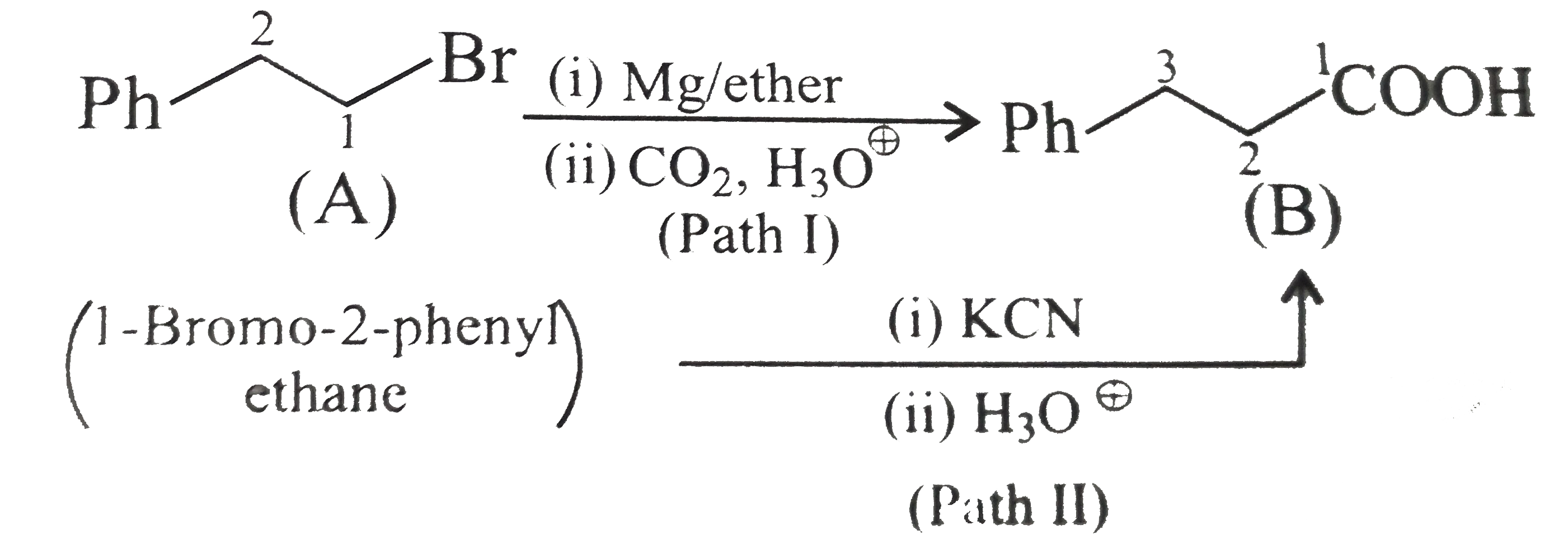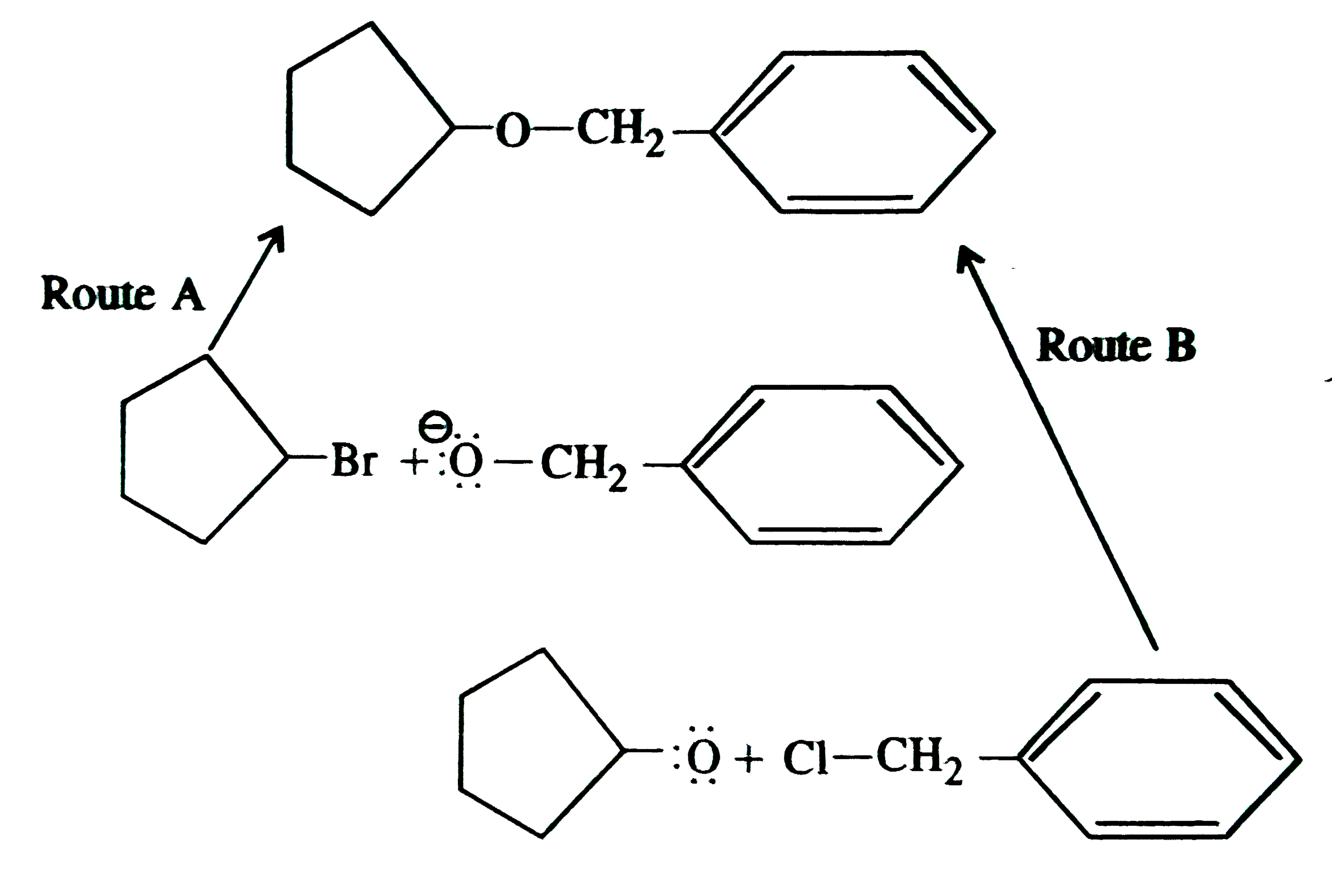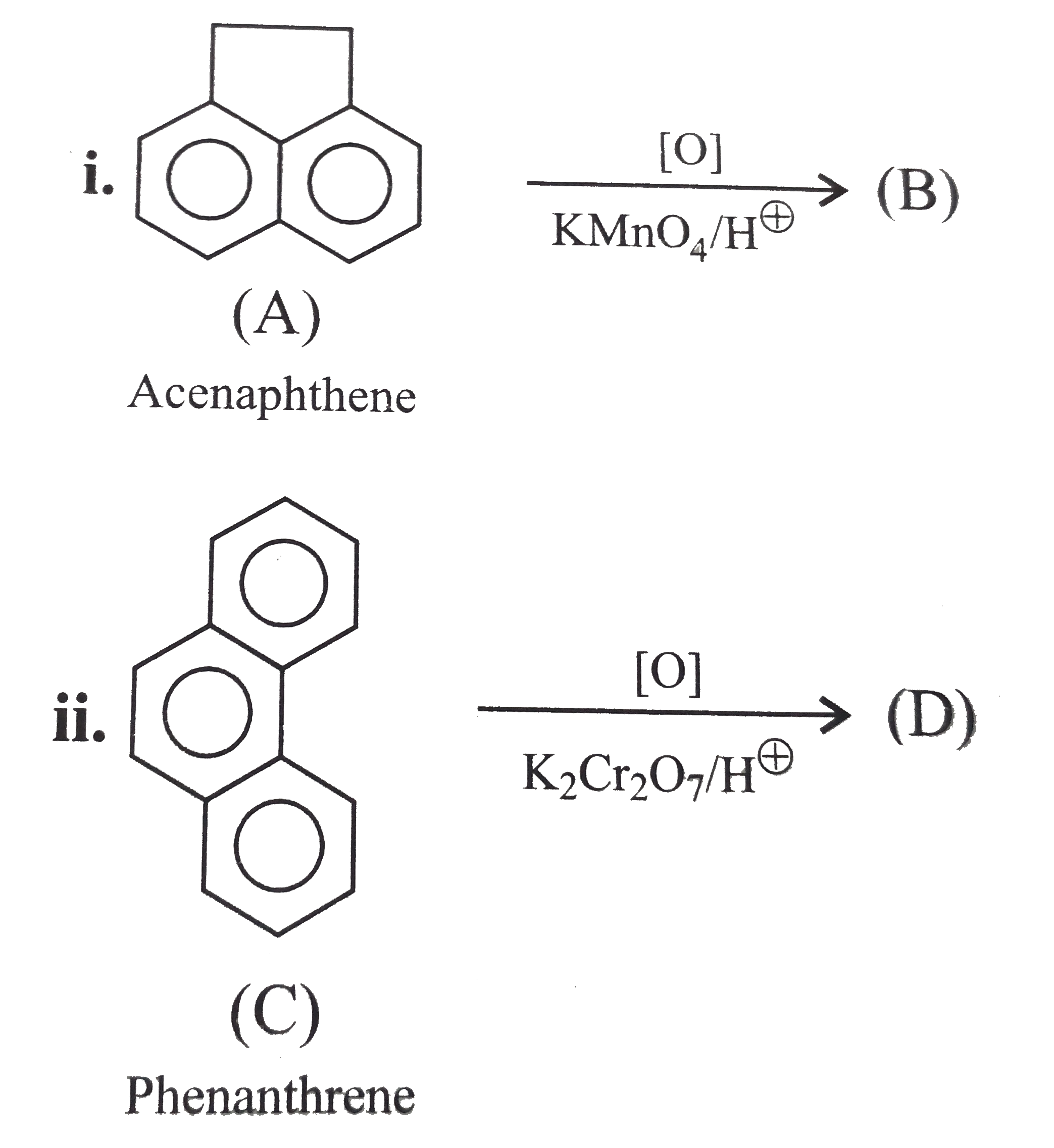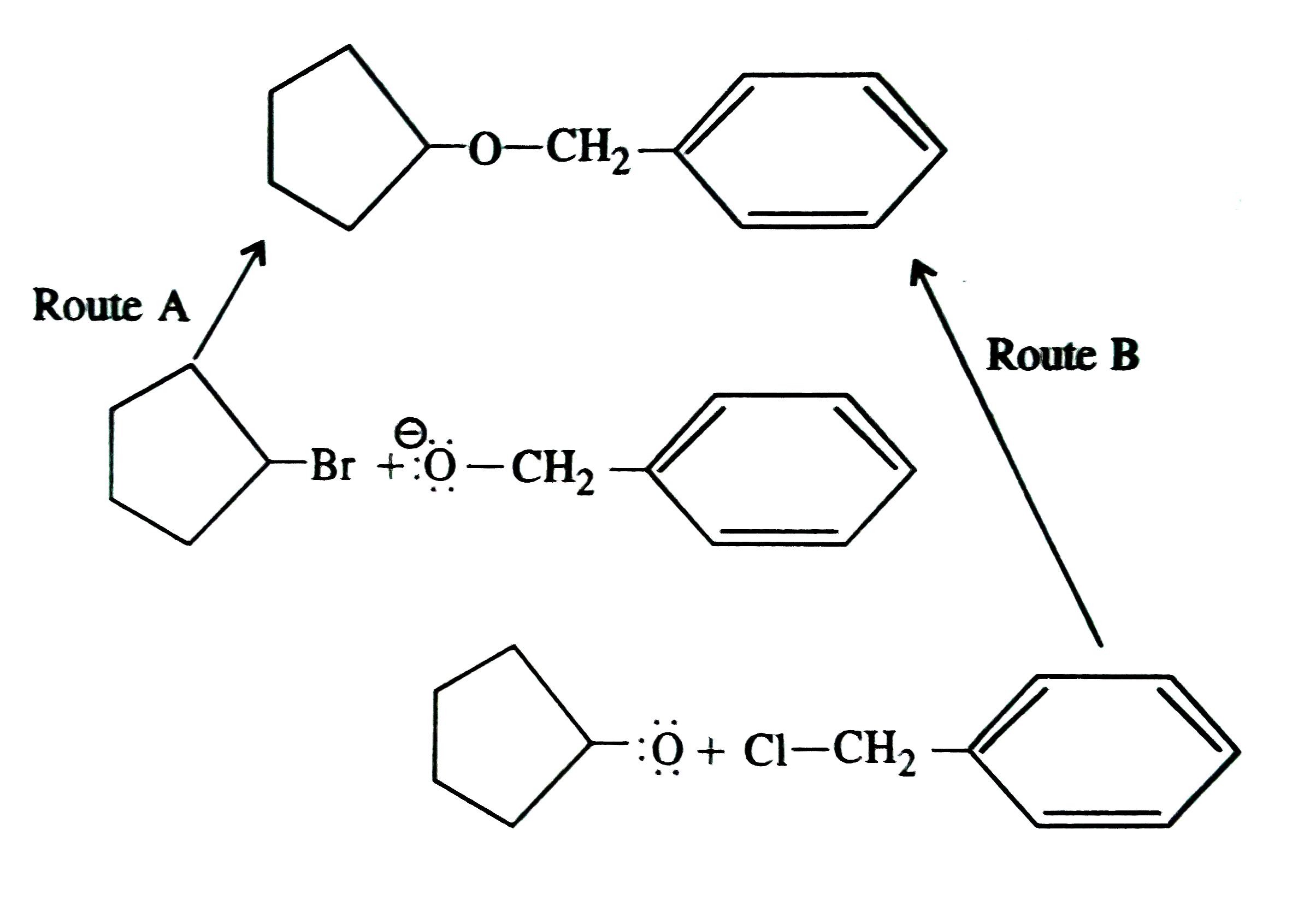Succinic acid (B) can be prepared by both nitrile and carbonation method as shown.

Both paths give good yields of (B).
(A) with Mg would lead to the loss of vicinal Br atoms to give alkene and MgBr2.
If both (A) are (R) are true and (R) is the correct explanation of (A).
If both (A) and (R) are true but (R) is not the correct explanation of (A).
If (A) is true but (R) is false.
If (A) is false but (R) is true.
The correct Answer is:D
Step by step video, text & image solution for Succinic acid (B) can be prepared by both nitrile and carbonation method as shown. Both paths give good yields of (B). (A) with Mg would lead to the loss of vicinal Br atoms to give alkene and MgBr_2. by Chemistry experts to help you in doubts & scoring excellent marks in Class 12 exams.
Topper's Solved these Questions
- BOOK - CENGAGE CHEMISTRYCHAPTER - CARBOXYLIC ACIDS AND THEIR DERIVATIVESEXERCISE - Exercises Archives (Single Correct)10videos
CARBOXYLIC ACIDS AND THEIR DERIVATIVES
- BOOK - CENGAGE CHEMISTRYCHAPTER - CARBOXYLIC ACIDS AND THEIR DERIVATIVESEXERCISE - Exercises Archives (Assertion-Reasoning)2videos
CARBOXYLIC ACIDS AND THEIR DERIVATIVES
- BOOK - CENGAGE CHEMISTRYCHAPTER - CARBOXYLIC ACIDS AND THEIR DERIVATIVESEXERCISE - Exercises (Singlecorrect)64videos
CARBOXYLIC ACIDS AND THEIR DERIVATIVES
- BOOK - CENGAGE CHEMISTRYCHAPTER - BIOMOLECULES, POLYMERS AND CHEMISTRY IN EVERYDAY LIFEEXERCISE - QUESTION BANK8videos
BIOMOLECULES, POLYMERS AND CHEMISTRY IN EVERYDAY LIFE
- BOOK - CENGAGE CHEMISTRYCHAPTER - CHEMICAL KINETICSEXERCISE - Archives Subjective23videos
CHEMICAL KINETICS
Similar Questions
Alkenes (A) and (B) yield the same alcohol (C) on hydration. On vigorous oxidation with KMnO4, (A) gives a carbonyl compound (D) and an acid (E) each containing four carbon atoms. On the other hand, (B) gives an acid (E) and a carbonyl compound (G). In (G) no two identical groups are attached to the same carbon atom. Give the structures of (A) to (G).
View SolutionAlkene (A) and (B) yield the same alcohol (C) on hydration. On vigorous oxidation with KMnO4, (A) gives a carbonyl compound (D) and an acid (E) each containing four carbon atoms. On the other hand (B) gives an aicd (F) and a carbonyl compound (G), In (G), no two identical groups are attached to the same carbon atom. Give structures of (A) to (G) with proper resoning.
View Solution
Knowledge Check
- Question 1 - Select One
3−Phenol propanic acid (B) can be prepared by both nitrile and carbonation method as shown.

Path I gives a good yield of (B).
ӨCN initiates elimination reaction.AIf both (A) are (R) are true and (R) is the correct explanation of (A).BIf both (A) and (R) are true but (R) is not the correct explanation of (A).CIf (A) is true but (R) is false.DIf (A) is false but (R) is true. - Question 2 - Select One
Read the passage given below and answer the following questions:
Aldehydes, ketones and carboxylic acids are few of the major classes of organic compounds containing carbonyl group. Aldehydes are prepared by dehydrogenation or controlled oxidation of primary alcohols and controlled or selective reduction of acyl halides. Ketones are prepared by oxidation of secondary alcohols and hydration of alkynes. Carboxylic acids are prepared by the oxidation of primary alcohols, aldehydes and alkenes by hydrolysis of nitriles and by treatment of Grignard reagents with carbon dioxide.
Name a method by which both aldehydes and ketones can be prepared.AReduction of carboxylic acidsBOzonolysis of alkenesCOxidation of alcoholsDAll of the above - Question 3 - Select One
When our target is

asked to make this ether startint from alkyl halides. First we recall that ethers can be prepared by substitution reactions of alkoxide anion nucleophiles with alkyl halide electrophiles- The William ether synthesis. The two ways to prepare the target ether are as follows
Next we examine the two reactions to determine whether both are expected to give a good yield of the target compound. Since route A combines a strongly basic nucleophile a secondary (2∘) alkayl halide we expect the major product to result from elimaination by E2 mechanism.
Route B on the other hand, employs a primary alkylhalide that can not give elimination (It has no hydrogen on the β-carbon) and that is excellent.
Substrate for an SN2substitution because it is benzylic Route B is the obvious choice.
Which of the following reagents when heated will give a good yield of an ether.AIsopropyl bromide and sodium isopropoxideBIsopropyl bromide and sodium ethoxideCBromo benzene and sodium phenoxideDSodium tert butoxide and ethyl bromide.
(a) Give the compounds from which isobutanoic acid (A)(Me2CHCOOH) can be prepared in a better way also describe the method.
(b) Convert 1-chlorobutane (A) to valeric acid (B).
( c) Convert benzene to adipic acid.
(d) Complete the following reactions.
(i)
(ii) .View Solution
.View Solutionv_display_options
View SolutionWhen our target is

asked to make this ether startint from alkyl halides. First we recall that ethers can be prepared by substitution reactions of alkoxide anion nucleophiles with alkyl halide electrophiles- The William ether synthesis. The two ways to prepare the target ether are as follows
Next we examine the two reactions to determine whether both are expected to give a good yield of the target compound. Since route A combines a strongly basic nucleophile a secondary (2∘) alkayl halide we expect the major product to result from elimaination by E2 mechanism.
Route B on the other hand, employs a primary alkylhalide that can not give elimination (It has no hydrogen on the β-carbon) and that is excellent.
Substrate for an SN2substitution because it is benzylic Route B is the obvious choice.
Alkyl phenyl ether can be prepared by heatingView SolutionRead the passage given below and answer the following questions:
Aldehydes, ketones and carboxylic acids are few of the major classes of organic compounds containing carbonyl group. Aldehydes are prepared by dehydrogenation or controlled oxidation of primary alcohols and controlled or selective reduction of acyl halides. Ketones are prepared by oxidation of secondary alcohols and hydration of alkynes. Carboxylic acids are prepared by the oxidation of primary alcohols, aldehydes and alkenes by hydrolysis of nitriles and by treatment of Grignard reagents with carbon dioxide.
Name the main compounds A and B formed in the following reaction:
CH3CN(i)CH3MgBr−−−−−−−−→(ii)H2O+AZn(Hg)/conc.HCl−−−−−−−−−−−−→BView SolutionWhen our target is

asked to make this ether startint from alkyl halides. First we recall that ethers can be prepared by substitution reactions of alkoxide anion nucleophiles with alkyl halide electrophiles- The William ether synthesis. The two ways to prepare the target ether are as follows
Next we examine the two reactions to determine whether both are expected to give a good yield of the target compound. Since route A combines a strongly basic nucleophile a secondary (2∘) alkayl halide we expect the major product to result from elimaination by E2 mechanism.
Route B on the other hand, employs a primary alkylhalide that can not give elimination (It has no hydrogen on the β-carbon) and that is excellent.
Substrate for an SN2substitution because it is benzylic Route B is the obvious choice.
Which of the following ethers can be prepared by William's synthesis ?View Solution

